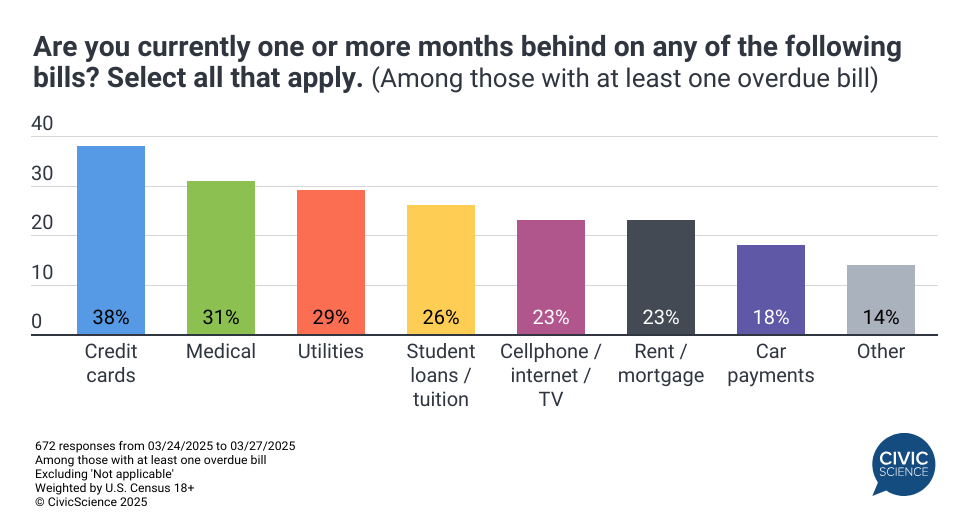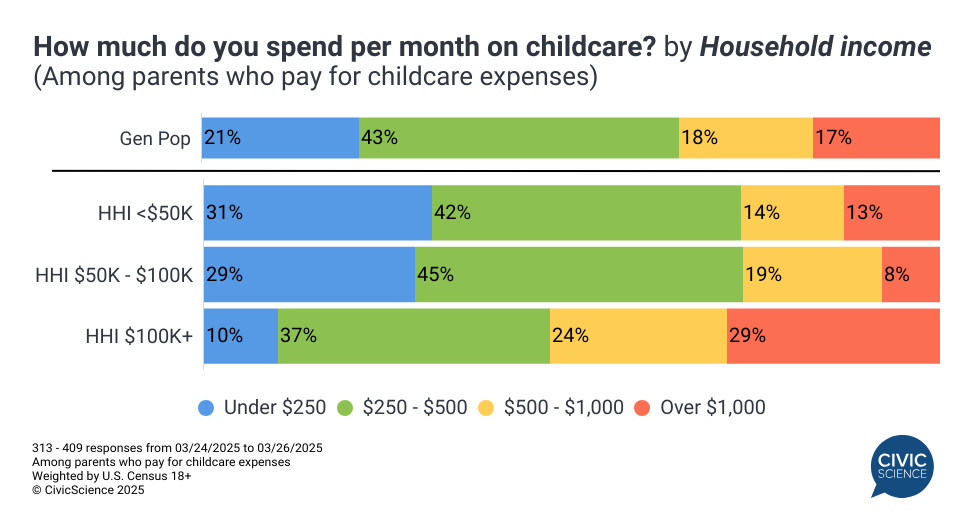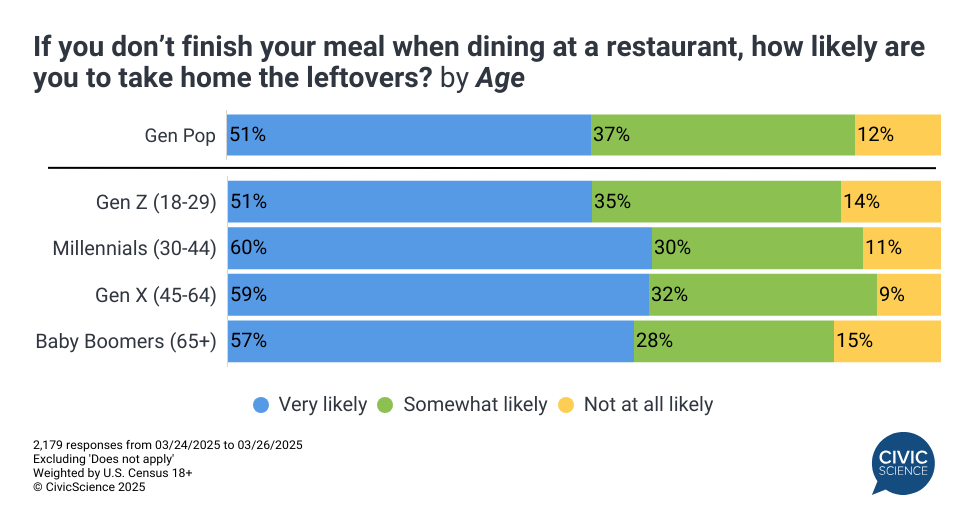This is just a tiny glimpse of the data available to CivicScience clients. Discover more data.
1. Twenty-nine percent of Americans say they’re late on at least one bill, with credit cards leading the way.
Recent reporting earlier this month highlighted a concerning trend that Americans are falling behind on car payments at unprecedented levels. New CivicScience data show that falling behind on bills, in general, is quite common among the Gen pop – nearly 3 in 10 (29%) report they are behind on at least one bill. This includes 39% of those with a household income under $50K and 35% of those making $50K-$100K annually.
A breakdown by the type of bill reveals Americans are most likely to be behind on credit card payments, followed by medical and utility bills. Meanwhile, rent/mortgage and car payments are comparatively less likely to be overdue (excluding not applicable).

Use this Data: CivicScience clients leverage real-time data like this to pinpoint financial stressors and predict consumer behavior, enabling proactive strategies to maintain customer retention and drive growth.
2. The majority of American parents who pay for childcare spend at least $3,000 per year.
Rising childcare costs are not exclusive to 2025, as evidenced by a report last year showing childcare costs were outpacing inflation. New CivicScience data among parents who pay for childcare show the majority report spending between $250 and $1,000 per month (or $3,000 to $12,000 per year). As much as 17% report they’re paying more than $1,000 per month. More than two in five of those in lower- and middle-income households are paying between $250-$500 monthly.
Childcare could become even more of a focus amid the Trump administration’s efforts to reduce and eliminate the Department of Education, beyond potentially increasing their expenses. If after-school programs are removed due to budget cuts, 48% of parents whose children attend these programs say they would need to reduce their work hours as a result. Parents in lower-income households (less than $50K) are especially likely to say they would need to work fewer hours if their child’s after-school programs are canceled.

3. When it comes to restaurant leftovers, Gen X are the most likely to save the food they don’t eat at restaurants.
Recent shifts in dining habits have drawn attention to how people handle restaurant leftovers. According to CivicScience data, more than half of Americans say they are ‘very’ likely to take the leftovers home if they don’t finish their meal at a restaurant. This holds true for respondents in all age groups, although Gen X and Millennials are slightly more likely to keep their leftovers, and Gen Z and Baby Boomers are slightly less likely to be inclined to take them home.

Take our Poll: What do you typically do with leftovers from dinner?








